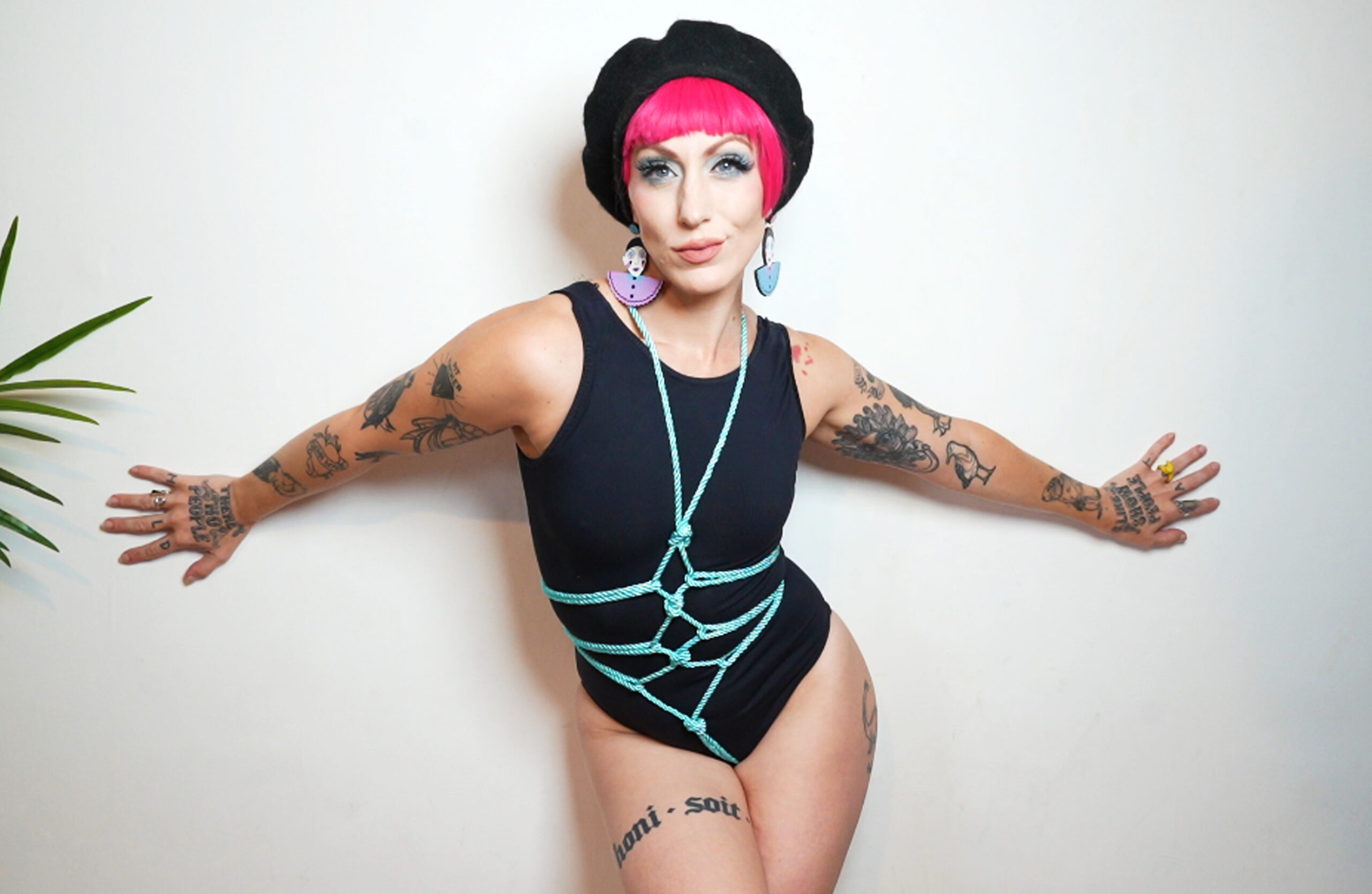The Everyday Lives Of Genderqueer Individuals

Experiences at Home

Home should be a sanctuary, a place where one can truly be themselves without fear or judgement. For genderqueer individuals, the experience of home can be complex and multifaceted. It can be a source of comfort and acceptance, but also a space where societal norms and expectations might clash with their authentic identities.
Family Dynamics
Growing up, many genderqueer individuals navigate a landscape at home that is often shaped by traditional gender roles and expectations. Family dynamics can range from completely accepting to outright rejecting, impacting how comfortable an individual feels expressing themselves. Some find support in open-minded parents or siblings who champion their identity, while others face challenges from family members who struggle to understand or accept their non-binary experiences.
The expression of gender at home can manifest in various ways. Some individuals may choose to present according to societal norms for the sake of familial harmony, while others actively challenge these expectations through their clothing, behavior, and pronouns. This constant balancing act can be emotionally taxing, leading to feelings of isolation or pressure to conform.
Ultimately, the experience of home for a genderqueer individual is deeply personal and unique. It’s shaped by individual family dynamics, cultural backgrounds, and personal journeys of self-discovery. Navigating these complexities requires resilience, self-advocacy, and a constant search for spaces where they can truly be seen and accepted for who they are.
Household Chores and Responsibilities
Household chores and responsibilities often reflect societal gender norms that may not align with the identities or experiences of genderqueer individuals. Growing up, these individuals might be assigned tasks based on traditional gender stereotypes, leading to feelings of discomfort or frustration. Some may feel pressured to conform to these expectations even if they don’t resonate with their gender identity.
For some genderqueer individuals, challenging these norms at home can be a way to assert their autonomy and express their true selves. They might renegotiate chore assignments or choose to take on tasks traditionally associated with the “opposite” gender, disrupting the existing power dynamics within the household.
Finding balance and establishing equitable distribution of chores within a household can be crucial for creating a supportive and inclusive environment for genderqueer individuals. Open communication and willingness to adapt traditional approaches are essential for fostering a space where everyone feels respected and valued, regardless of their gender identity.
Coming Out Processes
Coming out is a deeply personal journey that varies greatly from person to person. For genderqueer individuals, coming out at home can be especially complex, as it often involves navigating familial relationships and potentially confronting pre-existing beliefs or biases.
Some may choose to come out gradually, sharing their identity with trusted family members first and allowing them time to process the information. Others might opt for a more direct approach, having an open conversation about their gender identity with their entire family.
The reaction from family members can range widely, from joy and acceptance to confusion, anger, or even denial. It’s important for genderqueer individuals to remember that their coming out journey is their own, and they should proceed at a pace that feels comfortable and safe.
Having supportive allies within the family can make a significant difference in the coming out process. Whether it be a parent, sibling, or grandparent, having someone who listens without judgment and offers unconditional love can provide invaluable emotional support during this vulnerable time.
Ultimately, the goal of coming out is to live authentically and be true to oneself. Je Joue Mimi While navigating the complexities of family relationships can be challenging, it’s a crucial step in embracing one’s identity and creating a more inclusive and accepting environment at home.
Social Interactions
Social interactions play a vital role in shaping the experiences of genderqueer individuals. From navigating familial dynamics to engaging with wider communities, these interactions can present both challenges and opportunities for self-expression and acceptance.
Navigating Gendered Spaces

One significant aspect is how genderqueer individuals navigate social spaces that are often structured around binary notions of gender. This can range from everyday encounters in shops or public transportation to more formal settings like workplaces or educational institutions.
These environments may lack inclusivity, leading to microaggressions, misgendering, or assumptions about their identity based on appearance. Navigating these spaces requires resilience, self-advocacy, and sometimes, strategic maneuvering to ensure safety and comfort.
Social media and online communities offer both solace and challenges for genderqueer individuals. They provide platforms for connection, support, and sharing experiences with others who understand their struggles. However, they can also expose them to negativity, harassment, or attempts to invalidate their identities.
Building a supportive social circle is crucial for the well-being of genderqueer individuals. Finding friends, mentors, or partners who are accepting and affirming can provide a sense of belonging and counteract the isolation that can arise from navigating a world that often fails to understand or embrace their identities.
Dating and Relationships
Dating and relationships present unique challenges and opportunities for genderqueer individuals. Navigating societal expectations and norms surrounding romantic partnerships can be complex when one’s gender identity doesn’t align with traditional binary roles.
For some, finding partners who are open-minded and accepting of their gender identity is crucial for fostering healthy and fulfilling relationships. This may involve seeking out communities or platforms that cater to LGBTQ+ individuals or engaging in honest conversations about expectations and boundaries early on.
Genderqueer individuals may also experience pressure to conform to certain presentation styles or relationship dynamics that don’t feel authentic to them. It’s important for them to define their own relationship goals and communicate these clearly to potential partners, ensuring that both parties are comfortable and respected.
Open communication, honesty, and mutual respect are foundational elements for any successful relationship, particularly for genderqueer individuals navigating the complexities of societal norms. Finding a partner who embraces their identity and supports their journey is essential for creating a loving and supportive partnership.

Friendship Networks
Friendship networks are crucial support systems for genderqueer individuals. They offer spaces where they can connect with others who understand their experiences, share stories, and build communities of belonging.
These friendships often provide invaluable emotional support, validation, and a sense of normalcy that may be lacking in other aspects of their lives.
Navigating friendship dynamics can present unique challenges for genderqueer individuals. They may encounter situations where friends struggle to understand their identities or use incorrect pronouns, leading to feelings of frustration or isolation.
Building and maintaining authentic friendships requires open communication and education. It’s essential for genderqueer individuals to feel comfortable expressing their needs and setting boundaries with friends who are not supportive or understanding.
Finding friends who are accepting, affirming, and celebrate their individuality can significantly contribute to their overall well-being and create a network of support that fosters self-acceptance and resilience.
Work and Education
Work and education play crucial roles in the lives of genderqueer individuals, often presenting both opportunities for growth and challenges rooted in societal norms.
Workplace Experiences
The workplace can be a challenging environment for genderqueer individuals, as traditional gender roles and expectations are often ingrained in company culture and hierarchies.
Many face discrimination, harassment, or lack of understanding from colleagues or supervisors, leading to feelings of isolation, stress, and even job insecurity.
However, there is also a growing movement towards inclusivity in workplaces, with increasing awareness of gender diversity and a push for policies that promote equal opportunities and respect for all individuals regardless of their gender identity.
Genderqueer individuals bring unique perspectives and experiences to the workplace, contributing to innovation and fostering a more inclusive environment for everyone.
Education institutions can also present both challenges and opportunities for genderqueer students. They may encounter prejudice from peers or faculty, struggle with accessing resources that support their identities, or face pressure to conform to gender norms.
However, many educational institutions are making strides towards creating more inclusive learning environments through diversity training, gender-neutral policies, and the establishment of LGBTQ+ resource centers.
Access to supportive teachers, mentors, and peers who understand their experiences can be invaluable for genderqueer students, empowering them to thrive academically and personally.
Academic Environments
Work and education play crucial roles in the lives of genderqueer individuals, often presenting both opportunities for growth and challenges rooted in societal norms.
- The workplace can be a challenging environment for genderqueer individuals, as traditional gender roles and expectations are often ingrained in company culture and hierarchies. Many face discrimination, harassment, or lack of understanding from colleagues or supervisors, leading to feelings of isolation, stress, and even job insecurity.
- However, there is also a growing movement towards inclusivity in workplaces, with increasing awareness of gender diversity and a push for policies that promote equal opportunities and respect for all individuals regardless of their gender identity. Genderqueer individuals bring unique perspectives and experiences to the workplace, contributing to innovation and fostering a more inclusive environment for everyone.
Education institutions can also present both challenges and opportunities for genderqueer students. They may encounter prejudice from peers or faculty, struggle with accessing resources that support their identities, or face pressure to conform to gender norms.
- However, many educational institutions are making strides towards creating more inclusive learning environments through diversity training, gender-neutral policies, and the establishment of LGBTQ+ resource centers.
- Access to supportive teachers, mentors, and peers who understand their experiences can be invaluable for genderqueer students, empowering them to thrive academically and personally.
Healthcare Access
Healthcare access is a fundamental right that ensures everyone receives the medical care they need regardless of their gender identity or expression. For genderqueer individuals, navigating the healthcare system can present unique challenges due to societal biases, lack of understanding, and inadequate resources.
Mental Health Support
Access to affirming healthcare is crucial for the well-being of genderqueer individuals. They may face discrimination, misgendering, or a lack of knowledge about their specific needs from healthcare providers.
Finding healthcare professionals who are knowledgeable about gender identity and expression, and who use respectful language and practices, can be essential for ensuring positive experiences and access to appropriate care.
Mental health support is particularly important for genderqueer individuals, as they may experience higher rates of anxiety, depression, and other mental health challenges due to stigma, discrimination, and societal pressures.
Access to therapists and counselors who are trained in gender-affirming care can provide vital support for navigating identity exploration, processing trauma related to experiences of prejudice, and developing coping mechanisms for managing stress and anxiety.
Physical Healthcare Needs
Healthcare access is a fundamental right that ensures everyone receives the medical care they need regardless of their gender identity or expression. For genderqueer individuals, navigating the healthcare system can present unique challenges due to societal biases, lack of understanding, and inadequate resources.
Access to affirming healthcare is crucial for the well-being of genderqueer individuals. They may face discrimination, misgendering, or a lack of knowledge about their specific needs from healthcare providers. Finding healthcare professionals who are knowledgeable about gender identity and expression, and who use respectful language and practices, can be essential for ensuring positive experiences and access to appropriate care.
Mental health support is particularly important for genderqueer individuals, as they may experience higher rates of anxiety, depression, and other mental health challenges due to stigma, discrimination, and societal pressures. Access to therapists and counselors who are trained in gender-affirming care can provide vital support for navigating identity exploration, processing trauma related to experiences of prejudice, and developing coping mechanisms for managing stress and anxiety.
Legal Recognition and Rights
Legal recognition and rights are fundamental to ensuring the safety, dignity, and well-being of all individuals, including genderqueer people.
Access to legal documentation that accurately reflects their gender identity is crucial for navigating everyday life. This includes birth certificates, driver’s licenses, passports, and other official documents.
The lack of legal recognition can lead to significant challenges, such as discrimination in employment, housing, healthcare, and social services.
Documentation and Identification
Legal recognition and rights are essential for the well-being and safety of genderqueer individuals. Access to documentation that accurately reflects their gender identity is fundamental for navigating daily life. This includes birth certificates, driver’s licenses, passports, and other official documents.
Without legal recognition, genderqueer people may face discrimination in various areas of life, including employment, housing, healthcare, and social services. It can lead to feelings of invisibility, marginalization, and a lack of security.
Furthermore, legal protections against discrimination based on gender identity are crucial for creating a society where everyone is treated with dignity and respect.
Marriage and Family Law
Legal recognition and rights are fundamental to ensuring the safety, dignity, and well-being of all individuals, including genderqueer people.
- Access to legal documentation that accurately reflects their gender identity is crucial for navigating everyday life. This includes birth certificates, driver’s licenses, passports, and other official documents.
- The lack of legal recognition can lead to significant challenges, such as discrimination in employment, housing, healthcare, and social services.
Legal recognition and rights are essential for the well-being and safety of genderqueer individuals. Access to documentation that accurately reflects their gender identity is fundamental for navigating daily life. This includes birth certificates, driver’s licenses, passports, and other official documents.
Without legal recognition, genderqueer people may face discrimination in various areas of life, including employment, housing, healthcare, and social services. It can lead to feelings of invisibility, marginalization, and a lack of security.
Furthermore, legal protections against discrimination based on gender identity are crucial for creating a society where everyone is treated with dignity and respect.
Community and Identity
Community and identity are deeply intertwined for genderqueer individuals. Finding a sense of belonging and acceptance within chosen families and social circles is essential for their well-being and self-expression.
Navigating the complexities of societal norms and expectations surrounding gender can be isolating, making supportive communities crucial for providing validation, understanding, and a space to authentically be oneself.
Finding Supportive Communities
Community and identity are deeply intertwined for genderqueer individuals. condom safe Finding a sense of belonging and acceptance within chosen families and social circles is essential for their well-being and self-expression.
Navigating the complexities of societal norms and expectations surrounding gender can be isolating, making supportive communities crucial for providing validation, understanding, and a space to authentically be oneself.
- Online Communities: The internet has become a vital source of connection for many genderqueer individuals, offering online forums, social media groups, and virtual events where they can connect with others who share similar experiences.
- LGBTQ+ Organizations: Local and national LGBTQ+ organizations provide valuable resources, support services, and advocacy opportunities. They offer safe spaces for community building, education, and activism.
- Gender-Specific Support Groups: Some communities have dedicated support groups specifically for genderqueer individuals, providing a platform to share experiences, offer advice, and build relationships with others who understand their unique challenges.
Expressions of Gender Identity
Community and identity are deeply intertwined for genderqueer individuals. Finding a sense of belonging and acceptance within chosen families and social circles is essential for their well-being and self-expression. Navigating the complexities of societal norms and expectations surrounding gender can be isolating, making supportive communities crucial for providing validation, understanding, and a space to authentically be oneself.
- Online Communities: The internet has become a vital source of connection for many genderqueer individuals, offering online forums, social media groups, and virtual events where they can connect with others who share similar experiences.
- LGBTQ+ Organizations: Local and national LGBTQ+ organizations provide valuable resources, support services, and advocacy opportunities. heating powder They offer safe spaces for community building, education, and activism.
- Gender-Specific Support Groups: Some communities have dedicated support groups specifically for genderqueer individuals, providing a platform to share experiences, offer advice, and build relationships with others who understand their unique challenges.
Activism and Advocacy
Community and identity are deeply intertwined for genderqueer individuals. Finding a sense of belonging and acceptance within chosen families and social circles is essential for their well-being and self-expression. Navigating the complexities of societal norms and expectations surrounding gender can be isolating, making supportive communities crucial for providing validation, understanding, and a space to authentically be oneself.
Online Communities: The internet has become a vital source of connection for many genderqueer individuals, offering online forums, social media groups, and virtual events where they can connect with others who share similar experiences.
LGBTQ+ Organizations: Local and national LGBTQ+ organizations provide valuable resources, support services, and advocacy opportunities. They offer safe spaces for community building, education, and activism.
Gender-Specific Support Groups: Some communities have dedicated support groups specifically for genderqueer individuals, providing a platform to share experiences, offer advice, and build relationships with others who understand their unique challenges.
Activism and advocacy are crucial for creating a more equitable and inclusive world for genderqueer individuals. It involves raising awareness about gender diversity, challenging discriminatory laws and policies, and advocating for the rights and protections that all people deserve.
Genderqueer activists work tirelessly to challenge societal norms, promote acceptance, and ensure that everyone can live authentically without fear of prejudice or discrimination.
Through various forms of activism, they strive to create a world where gender expression is celebrated and everyone feels safe and valued.
- Education and Awareness Campaigns: Activism often involves raising awareness about gender identity and expression through educational programs, public speaking engagements, and online campaigns. This helps challenge misconceptions and foster understanding.
- Policy Advocacy: Genderqueer activists advocate for policies that protect their rights, such as anti-discrimination laws, access to healthcare, and legal recognition of gender identity.
- Community Organizing: Building community coalitions and organizing grassroots movements strengthens the voice of genderqueer individuals and amplifies their demands for social justice.
Genderqueer activists work tirelessly to challenge societal norms, promote acceptance, and ensure that everyone can live authentically without fear of prejudice or discrimination.
Through various forms of activism, they strive to create a world where gender expression is celebrated and everyone feels safe and valued.
- Education and Awareness Campaigns: Activism often involves raising awareness about gender identity and expression through educational programs, public speaking engagements, and online campaigns. This helps challenge misconceptions and foster understanding.
- Policy Advocacy: Genderqueer activists advocate for policies that protect their rights, such as anti-discrimination laws, access to healthcare, and legal recognition of gender identity.
- Community Organizing: Building community coalitions and organizing grassroots movements strengthens the voice of genderqueer individuals and amplifies their demands for social justice.
Discover Small and Portable Vibrators for Travel
Purchase Realistic Vibrators with Realistic Details Online
Buy Quirky and Stylish Vibrators with Advanced Features
Shop Bullet Vibrators for Realistic Sensations
Explore App-Enabled Remote-Controlled Vibrators Online
Find Vibrators That Are a Testament to Luxury and Quality
Buy Portable and Discreet Wireless Vibrators
Order Sleek and Quiet Waterproof Vibrators Today
Bend and Blossom
Brand Me Collective

























